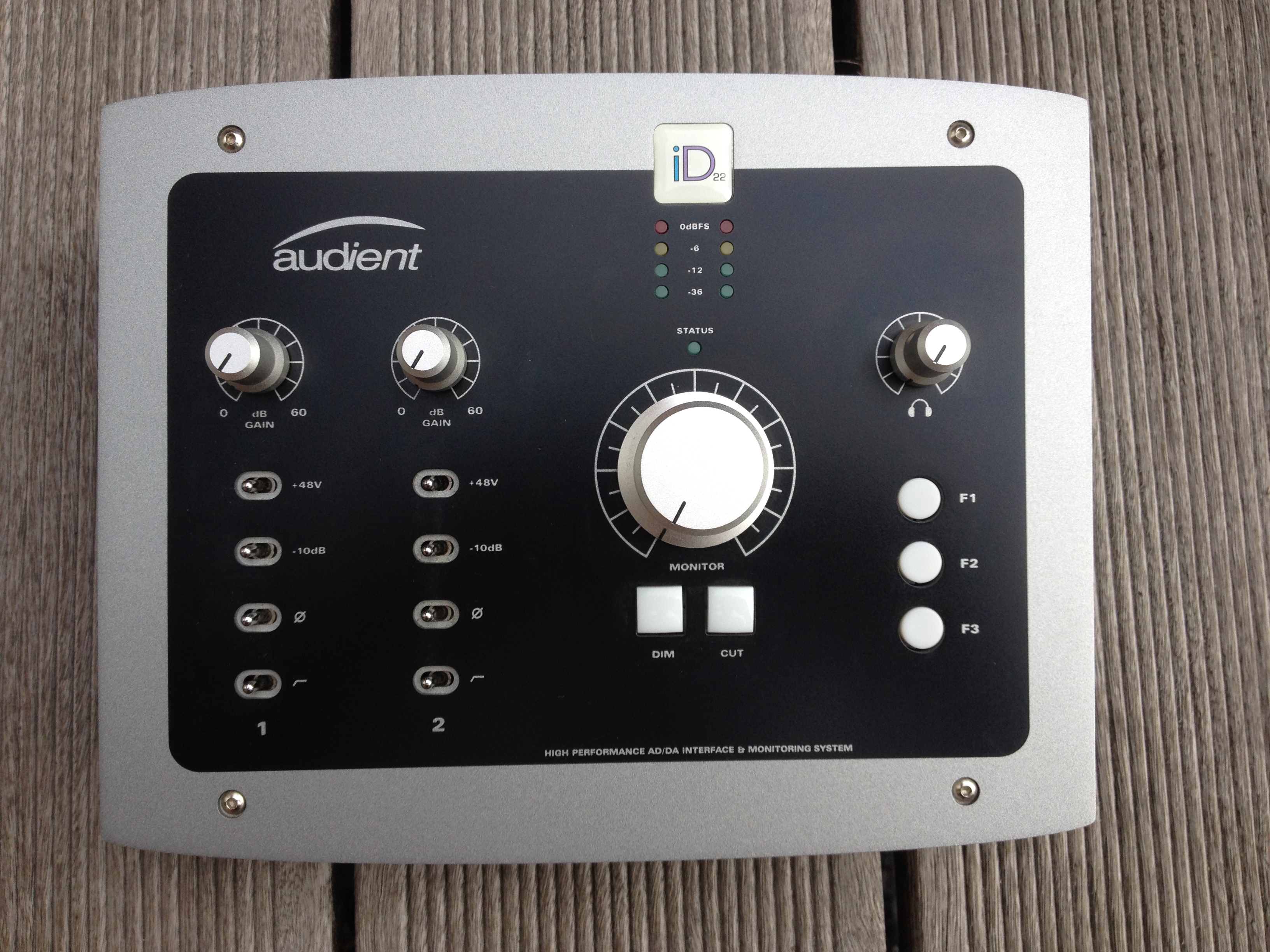

The iD14 is good too, but was designed to use less power (to allow running on USB bus power) which is why its dynamic range is down by 4dB (but still a very healthy 116dB).

Better conversion: the iD22 uses better conversion chips (PCM4220 vs PCM4202) to attain 120dB of dynamic range. ADAT Ouput: the iD14 also has input, so both can be expanded to 10 input channels (using anything from a 199$ Behringer ADA8200 which is what I use, to a fancy Audient ASP880), but the iD22 can also output 8 extra channel via ADAT, useful if you want to use outboard gear while mixing, or analog summing, or simply to keep the iD22 as the clock master when using an ADAT preamp (if said preamp can clock to ADAT input of course) This is in the analog domain and allows more headroom if you're micing a loud source with a sensivity mic. Most of my mics have pads and hi-pass built-in, but it doesn't hurt to have the option on the interface. PAD, Hi-Pass and Polarity switches for the preamps (iD14 has Polarity in the software mixer). If you want to delve in outboard preamps, compressor or EQ down the road, the iD22 is the best interface under 1000$ (RME Babyface Pro a close 2nd because it has genuine line inputs, but no inserts between preamps and converters) Balanced Inserts: The MOST important feature IMHO, it accomplishes two things, first you can insert a processor (compressor, EQ, whatever) between the preamp and converter, but also the Return gives you the purest path into the converters, something that is VERY hard to find as almost all interfaces with built-in preamps leave the preamps in the signal path when using the Line in. 2 extra line outputs (useful for example if you want to reamp something without sacrificing your monitor output, or switch between two outputs, or send a different mix to the performer, etc) DI input and headphones output on the front (more practical for most)

Can run on bus power (need to use the power supply to get phantom power)


 0 kommentar(er)
0 kommentar(er)
